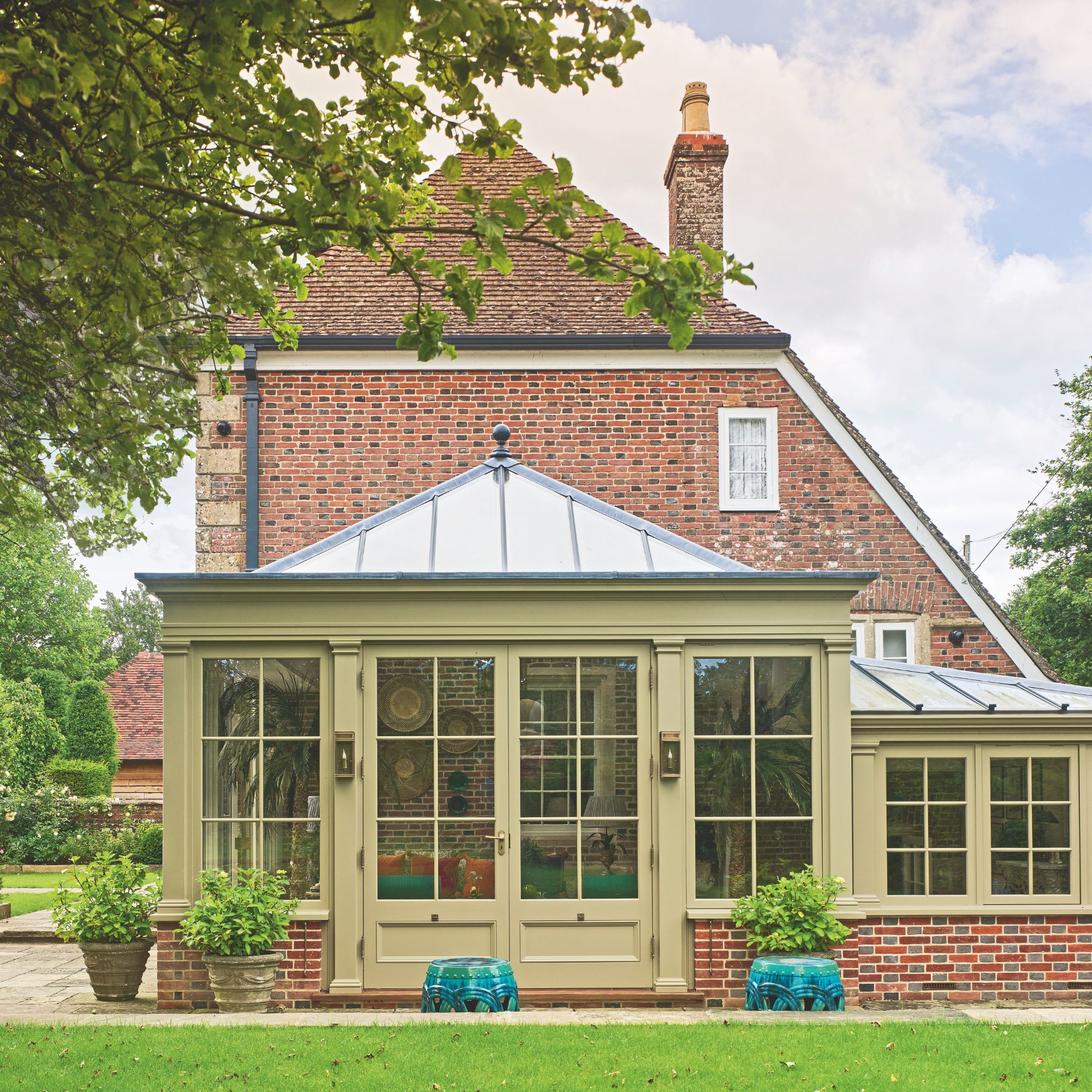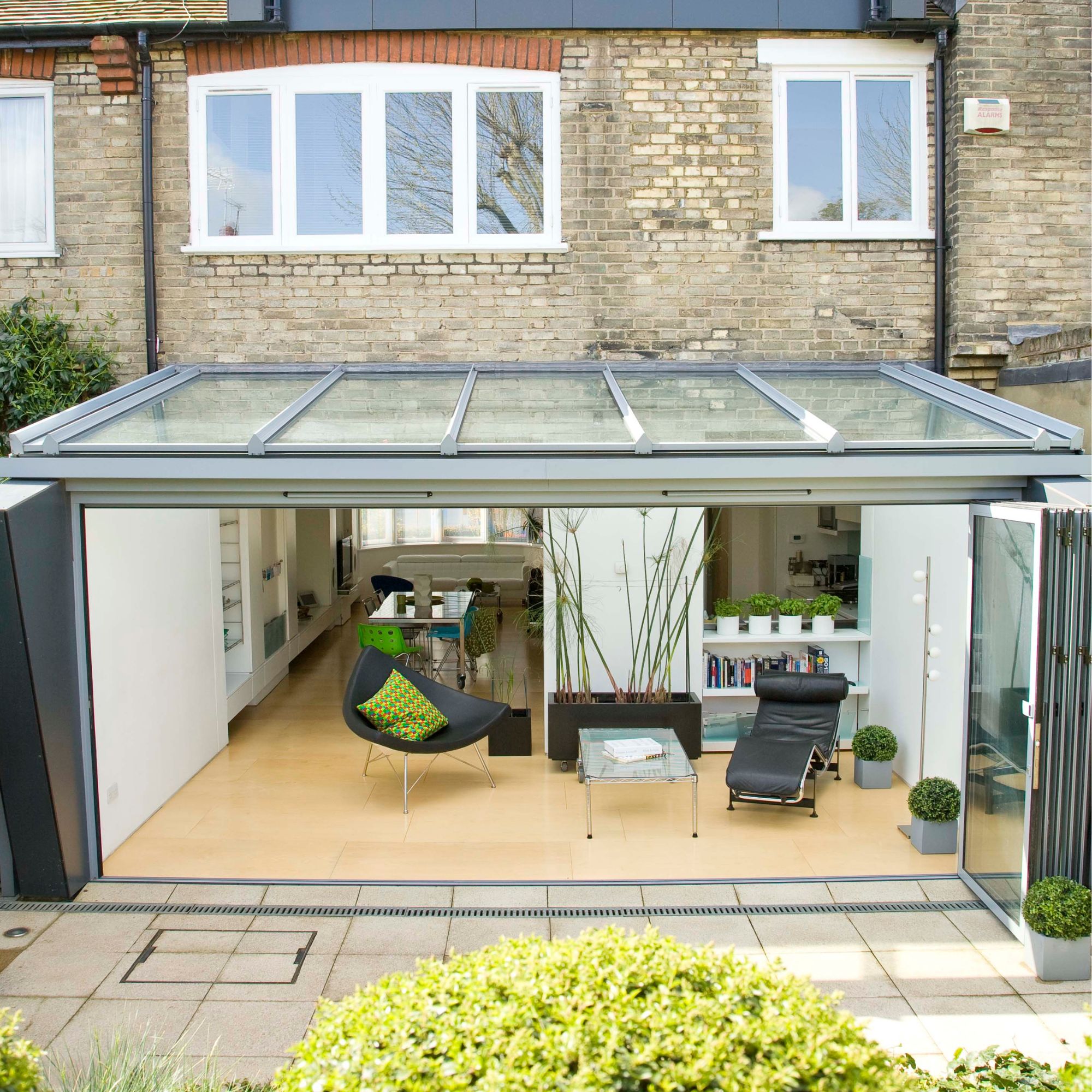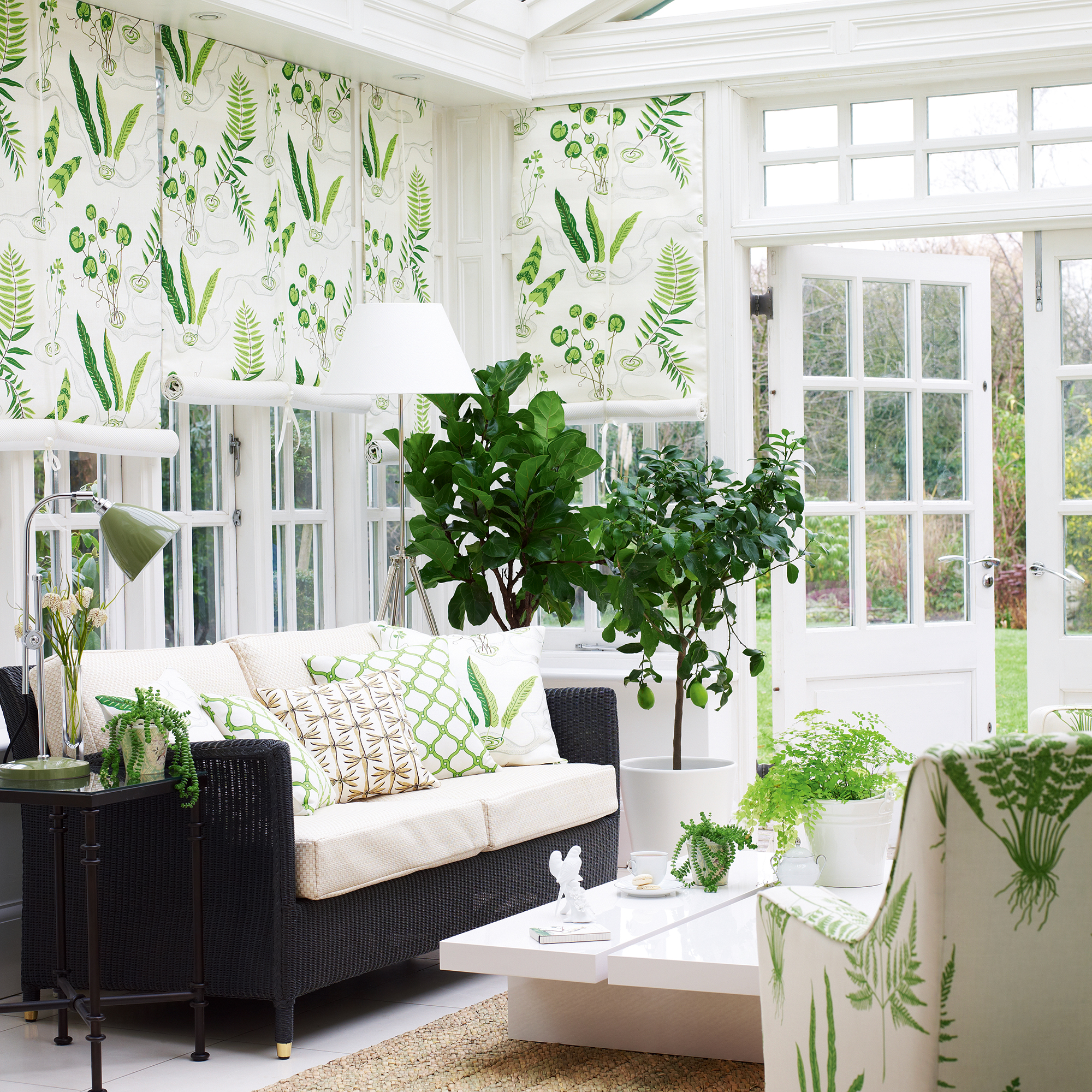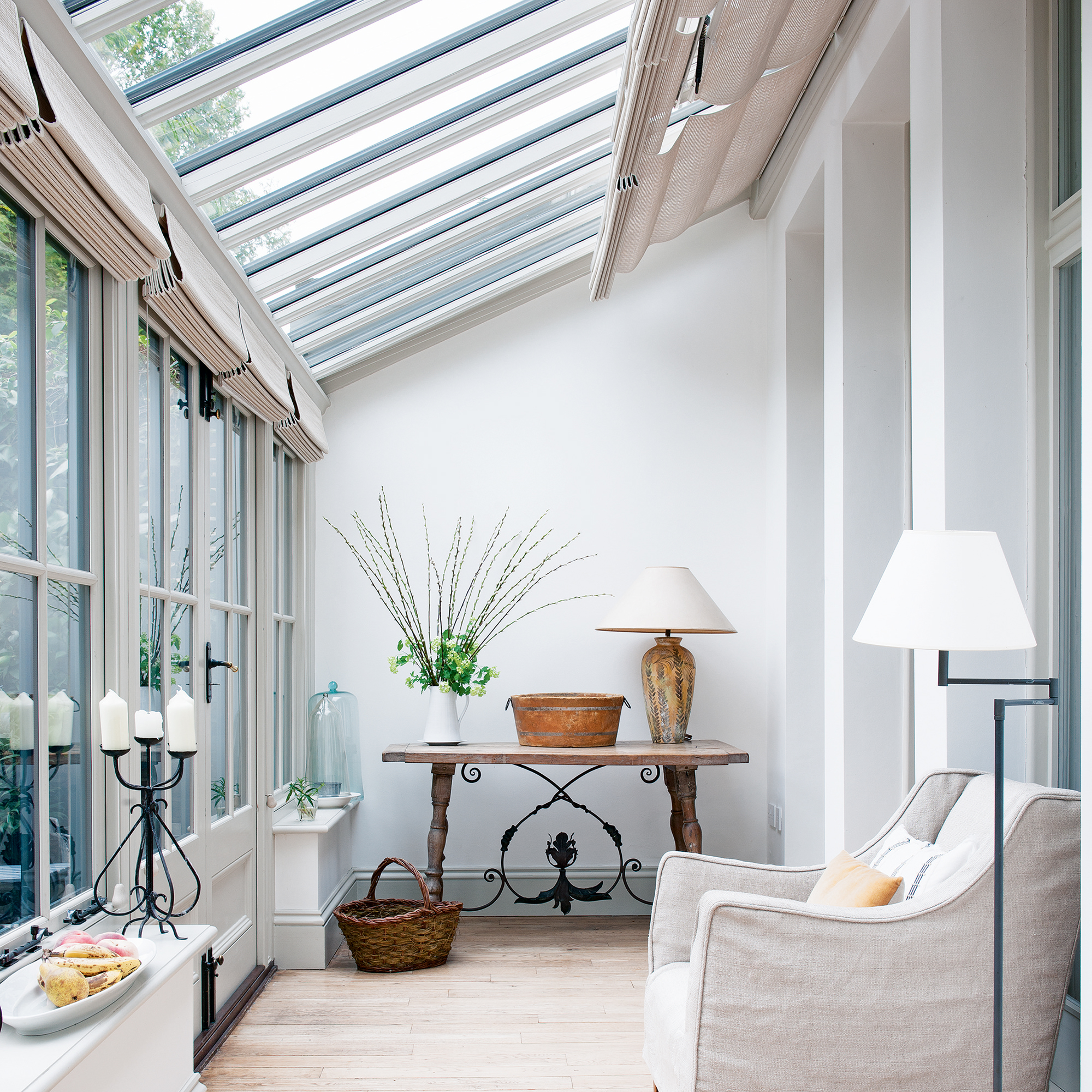How to add a conservatory and make the most of the additional space — these pros share their top tips
Make sure you're happy with your new addition by following our guide


EDITOR’S NOTE: We are aware that this article includes a quote from a purported expert whose credentials we have not been able to verify. The quote is in a queue to be removed as soon as possible. We regret this lapse in our verification process and have updated our internal protocols to reduce the risk of recurrence.
If you're planning a conservatory, there's a lot to think about to make sure you choose the right addition for your lifestyle and home.
There are loads of conservatory ideas to choose from, so it can feel overwhelming. This is where our guide comes in. We've spoken to multiple conservatory experts to help you decide if a conservatory is the right choice for your home, how much you should budget, the design aspects you'll need to consider and more.
Is a conservatory a good idea?

In the past, older conservatories gained a not undeserved reputation for being roasting hot in the summer and freezing cold in the winter. This left them unusable for large portions of the year.
But nowadays there are loads of solutions to help ensure a nice comfortable climate all year round, such as solar control glass or window films, vents or even a solid roof.
If you're worried about maintenance, you can also specify self-cleaning glass. This has a special coating that is activated by UV rays, so it breaks down the dirt that lands on the roof and windows, ensuring they stay clear and grime free.
If you have an existing addition that is falling short, consider modernising your conservatory to make it more suitable for your home and lifestyle.
There have also been rumours that conservatories are going to be banned in the UK, but this is not the case so don't think you're going to waste your money if this is the right solution for your home.
Sign up to our newsletter for style inspiration, real homes, project and garden advice and shopping know-how
Is a conservatory the right choice?

Before you settle on a conservatory, it's worth considering the alternative options available to you.
If additional space is what you're after, then it's worth just weighing up an extension versus a conservatory to see which best suits your needs.
If you are particularly after a glazed space, then it's worth understanding the distinction between a conservatory and orangery.
Mervyn Montgomery, founder and joint director of Hampton Conservatories says: ‘Conservatories tend to have a sloping roof, bear their weight onto the side frames of the structure, and are very light,’ he says. ‘Orangeries have a suspended glazed roof lantern built into a solid flat roof, which adds height and allows light to flood in. The flat areas provide shade in the summer and warmth in the winter as they are heavily insulated.'

For something with real wow-factor, you could opt for one of these glass extension ideas. Extensions like this have a clean, simple aesthetic with all glass walls and a flat or sloped glass roof. Minimal framing offers uninterrupted views of the garden, but you need to be careful about where you locate it so that you can ensure privacy where you need it.
The ultra-contemporary look often works well with period homes, providing a contrast to the traditional style and materials rather than trying to imitate them, which can end up looking off, leaving your disappointed with the result.
For something separate from the rest of your home, you could consider a garden room instead (and it turns out there is a difference between a conservatory and a garden room).
How much should you budget for a conservatory?

If you're weighing up whether it's cheaper to build a conservatory or an extension, a conservatory is usually the cheaper option. You can expect to pay anywhere from £10,000 up to £40,000 for a conservatory, but how much a conservatory costs will depend on a few different factors.
Property and construction expert at MyJobQuote.co.uk, Thomas Goodman says: ‘There are a number of things that can affect the cost but the size of the conservatory and the materials it’s made from are two primary factors.
'A uPVC frame and polycarbonate glazing will cost less than a timber or aluminium framed conservatory with double or triple glazing. Having a brick dwarf wall around the base, an insulated and tiled roof and bifold doors will also add to the cost.
'Another significant cost factor is whether you go for a simple lean-to design or open up your rear wall to create a large open-plan space. Along with these cost factors, you also need to decide whether to heat it with a simple panel heater, radiators or underfloor heating. The kind of flooring, finishes and furniture you choose for your conservatory will also affect the final cost.’
Choosing the right conservatory

Once you've decided a conservatory is the right option for your home, there are some key decisions you'll need to make to ensure you choose the right conservatory.
These include:
- Size and location. Where you choose to position your conservatory and how big you want it to be will not only impact costs, but may also require the need to apply for planning permission.
- Frame. You can choose between uPVC, aluminium and timber. Frames made from uPVC will be more affordable, while timber will be at the more expensive end of the scale.
- Glazing. Special coatings on the glass may cost extra, but could be key to keeping your conservatory a comfortable temperature year-round.
- Roof type. Carefully consider the type of roof you want, from polycarbonate or glass to something more solid.
- Heating. Even if you have a thermally efficient structure, you might still need some additional heating in your conservatory to see you through the winter.
- Build route. If it's within your capabilities, you could buy a conservatory kit and build it yourself to save some money. But remember a conservatory will need foundations, which may require the services of a professional.
Barney Bell from David Salisbury adds: ‘Designing the perfect conservatory involves balancing aesthetics, practicality, and long-term value, but, above all, listening to how the customer intends to use the new space.
'Choosing high quality materials is essential for durability and year-round comfort,' explains Barney. 'Modern glazing technology, like solar-control glass, helps regulate temperature, making the space enjoyable in all seasons.
'Design should complement the existing property, both aesthetically and structurally. A well-designed conservatory enhances a home’s value, while a poorly planned one may feel like an afterthought.
'Finally, consider the intended use so that it informs the layout and design features. Thoughtful planning guarantees a beautiful, functional addition to your home, something an experienced designer will be able to work with you to achieve.’
Do you need planning permission for a conservatory?

In many cases, you won't need planning permission for your conservatory, as long as they meet the strict criteria set out under Permitted Development.
However, if you live in a designated area, like a national park or conservation area, your Permitted Development rights may have been restricted or removed, which means you will need to apply for planning consent.
Barney adds: 'First, planning permission and building regulations may apply, especially for listed properties or those in conservation areas. We would suggest seeking some expert advice from the outset, to help navigate these requirements. It is also worth considering the potential impact on neighbours and whether to communicate your intentions to them early on, especially if you share a ‘Party Wall.’
FAQ
Can I build a conservatory myself?
A competent and confident DIYer could build their own, saving thousands on labour costs. There are DIY kits available to buy with all of the sections pre-made, and detailed instructions on how to install it, from the base and the wall sections, to the side framework and roof.
You can also reduce costs by choosing the simplest design, which is a lean-to style with a one-sided sloping roof. These are less ornate than Victorian and Edwardian conservatories and have a more contemporary look.
Once you've decided that a conservatory is the right option for your home, take a look at these conservatory interior ideas to make your new space looks as stylish as possible.

Sarah Handley is Ideal Home’s Renovation Editor. She joined the team full time in September 2024, following three years of looking after the site's home finance content. As well as all things renovation, Sarah also looks after our Home Energy content, which covers all aspects of heating and insulation as well as tips on how homeowners can reduce their energy usage. She has been a journalist since 2007 and has worked for a range of titles including Homebuilding & Renovating, Real Homes, GoodtoKnow, The Money Edit and more.
- Jennifer EbertDeputy Editor
- Alison JonesStaff writer